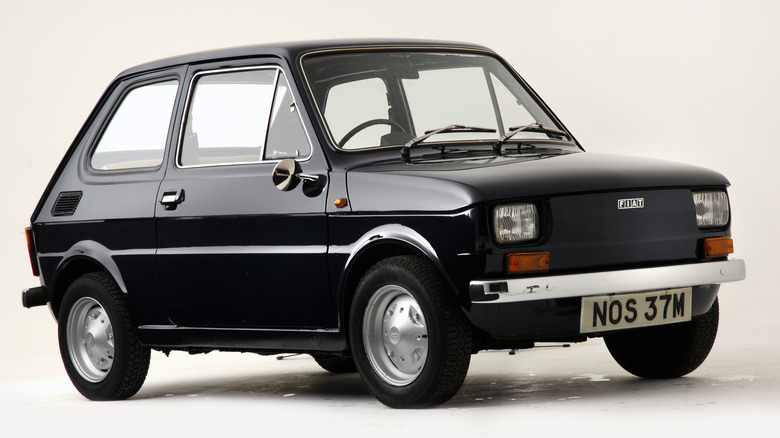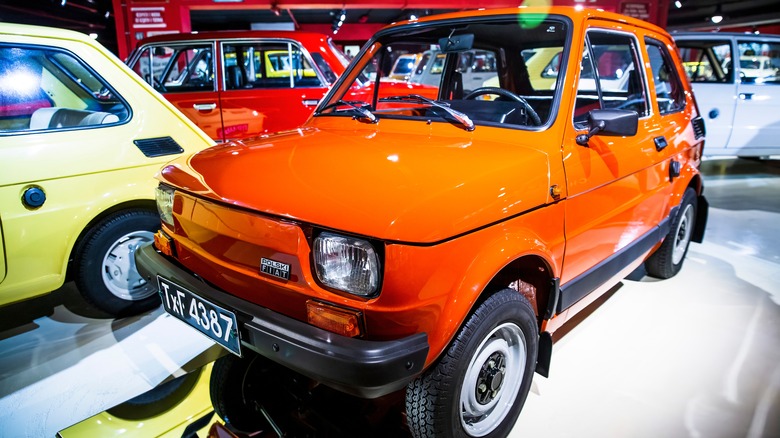Why The Incredibly Popular Fiat 126P Was Banned In The USA
The Fiat 126 is an adorable car. It looks like a Little Tikes Cozy Coupe with a license plate and turn signals.
Fiat made nearly 5 million 126s over its 28-year production life from 1972 to 2000. It was made in factories in both Italy and Poland. All over Europe in the latter quarter of the 20th century, the 126 was seen as a cheap family car for hauling kids and groceries around town. It was powered by a microscopic rear-mounted two-cylinder engine that produced horsepower figures somewhere between that of a lawn tractor and a motorcycle.
The interior was spartan and cheaply held together, but the car was dead simple to operate and work on. It was also a four-seater that a whole small family could (theoretically) fit in. That's exactly what Europe wanted in an entry-level car. It was as utilitarian as a dishwasher — and styled like one.
Dubbed the "Polski Fiat" or "The Polish Fiat," the 126 was a hit in Eastern Europe where it was an affordable option for anyone who wanted transportation after the fall of the Soviet Union. Despite the millions produced, its immense popularity, and the sheer adorability factor, Polski Fiats were never offered in the United States.
Giving Fiat the cold shoulder
Cold War politics served as one major roadblock as to why there are no American 126s. Until 1989, Poland was still decidedly a Communist country, and the United States has been famously icy towards any country bearing the hammer and sickle.
If history is any teacher, an Eastern Bloc-made economy car would likely be a hard sell to politicians and the American public. Even if it was cheap and simple to work on.
Secondly, the Fiat likely wouldn't be up to snuff with American regulations even if it was going to be imported. It wasn't safe for sustained highway speeds. Driving the diminutive Fiat 126 on American roads would turn terrifying the second someone in a yacht-sized station wagon tried to pass you on the highway. In addition, the tiny two-cylinder would likely not pass the stringent emissions standards set by the U.S. in the 1970s (via MotorBiscuit).
Despite all its shortcomings, you can't help but find the 126 endearing with its bug-eye headlights and overall happy demeanor. It's a shame they were never offered Stateside. After all, how could you say "no" to that face?

